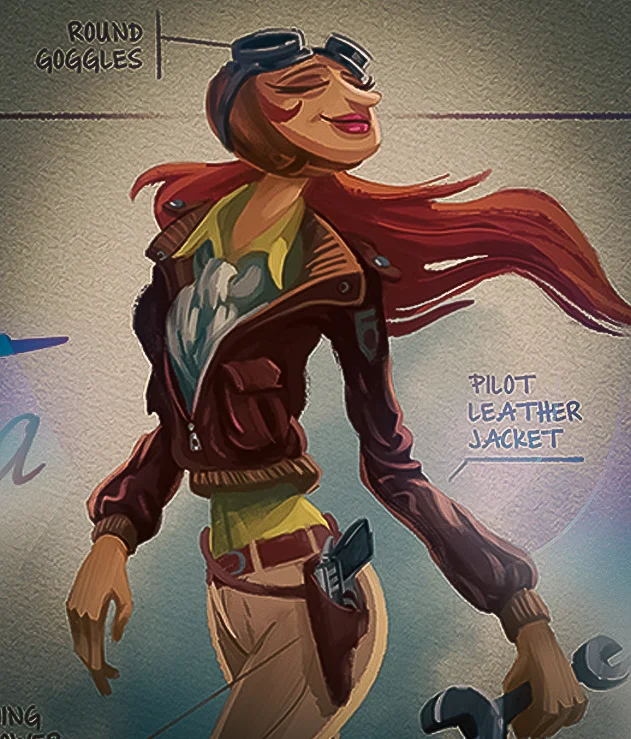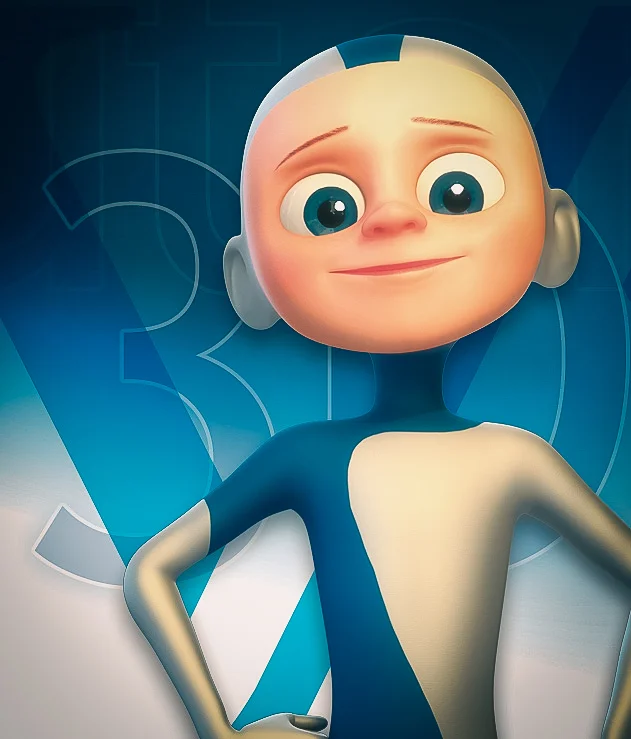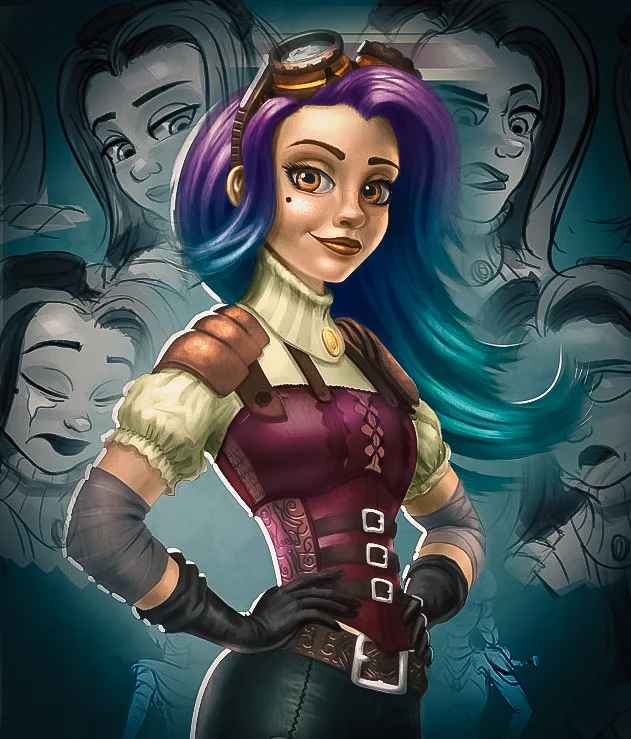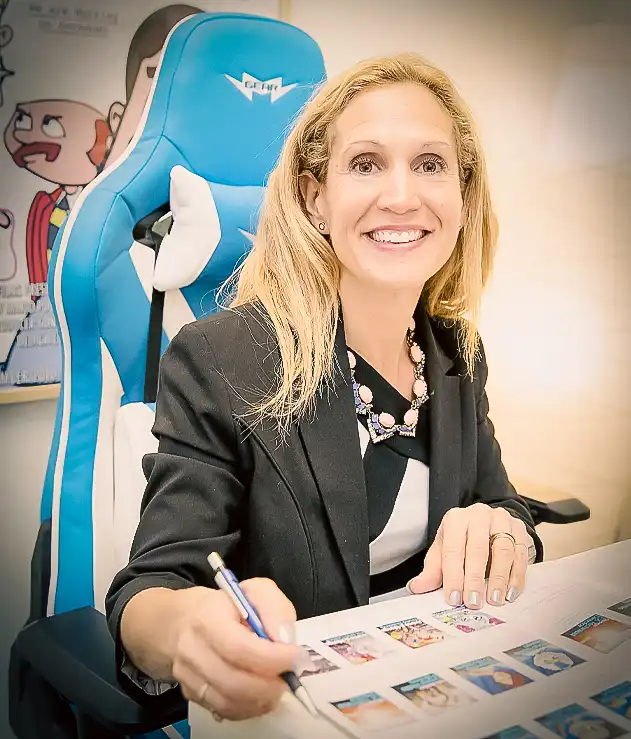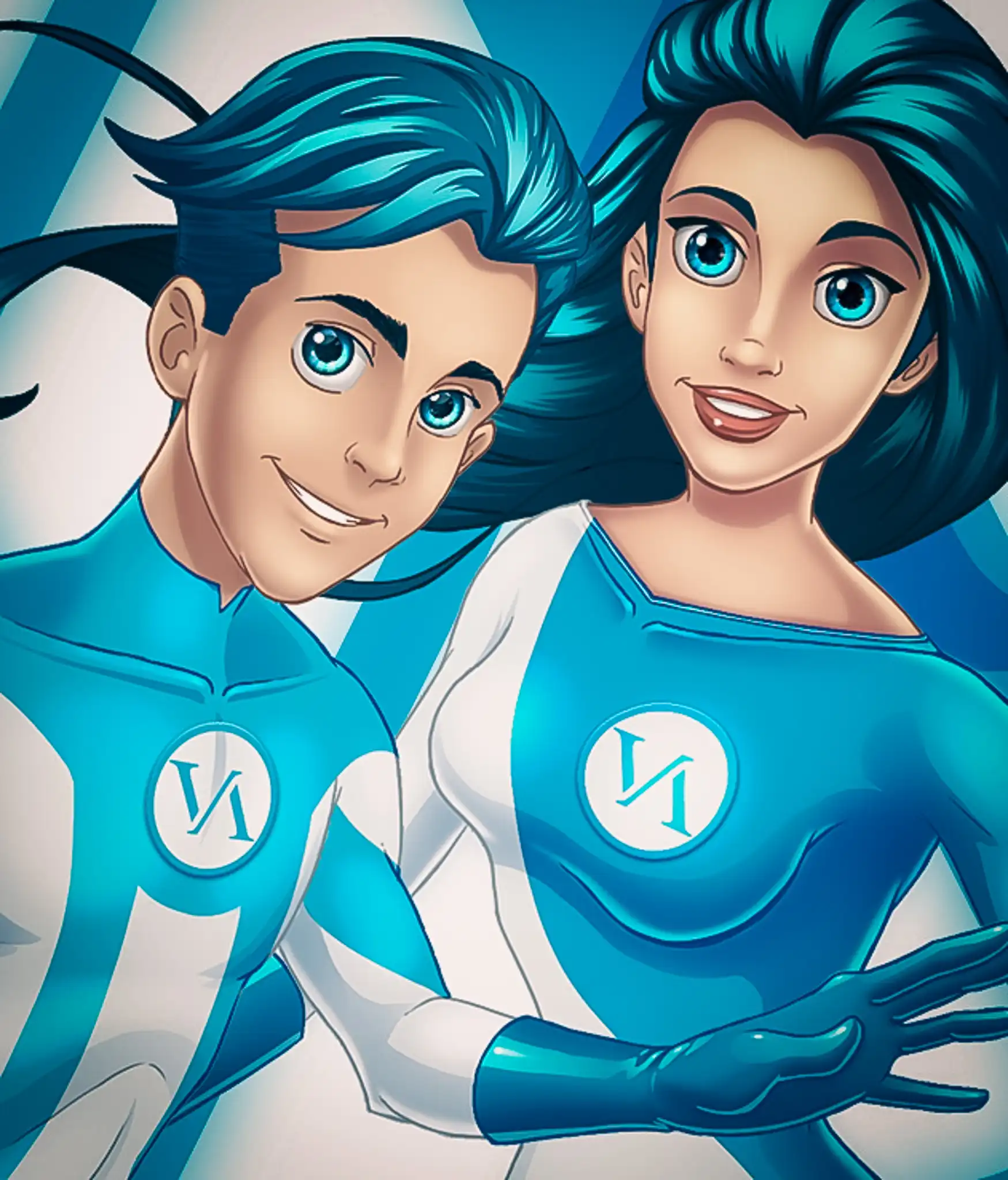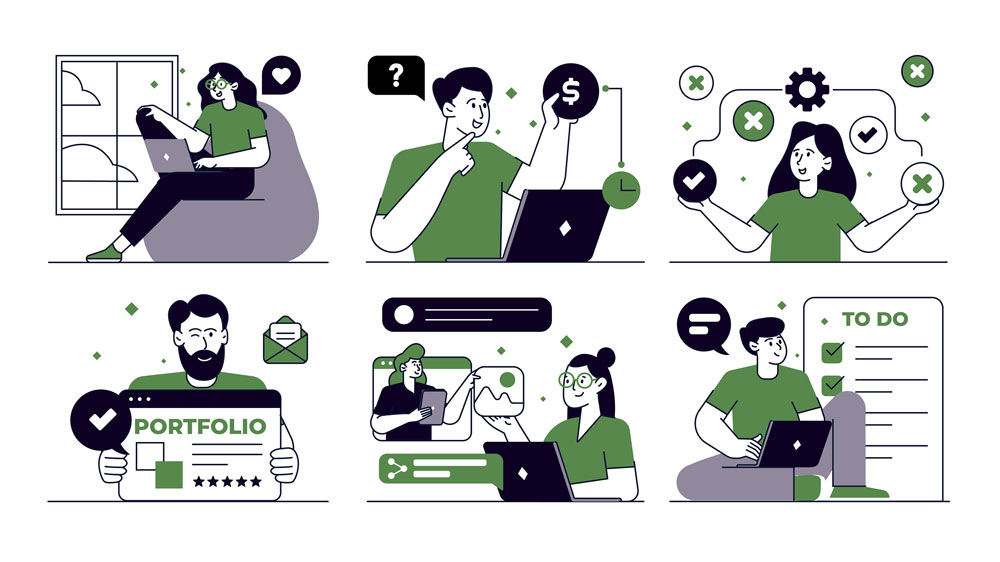 Image: Graphics4u (Motion Array)
Image: Graphics4u (Motion Array)
Author: VANAS Team
Freelancing in Digital Arts
Freelancing sounds like freedom, right? Imagine waking up, skipping the bus ride, and working from your room — or a beach if you like. For many young creatives, especially those dreaming of working in animation, video games, or as concept artists, 3D modelers, or texture artists, freelancing is not just a side gig — it’s a lifestyle. But how do you even start? And once you do, how do you actually get paid? This guide will walk you through the steps in a way that makes sense — no business degree required.
Table of Contents
- What is Freelancing?
- Why Freelancing Works for Animators and Creatives
- Steps to Become a Freelancer
- Building a Portfolio That Pops
- How to Find Your First Freelance Job
- Setting Your Rates
- How to Get Paid as a Freelancer
- Dealing With Clients Like a Pro
- Common Mistakes to Avoid
- Frequently Asked Questions
What is Freelancing?
Freelancing means working for yourself. You’re not tied to one company — you take on different projects from different clients. You're basically your own boss.
Some freelancers work in writing, programming, photography — and yes, animation, software development, character rigging, and more. You decide when you work, what projects you take, and how much you charge.
As one freelancer put it, “Freelancing gave me the power to say no to projects I didn’t believe in — and yes to the ones I was excited about.”
Why Freelancing Works for Animators and Creatives
Let’s be real: if you love animation or video games, there are tons of ways to make money without working at a big studio.
Here’s why freelancing rocks for animators and digital artists:
- Flexibility – Work from anywhere, even in pajamas.
- Diverse Projects – One week you’re animating a music video, the next you’re designing a game character or building a 3D environment.
- Creative Control – You choose what kind of projects you want, whether it's 2D animation, concept art, or texture painting.
Freelancing also works well for software developers, especially those creating tools or plug-ins for 3D modeling, animation, or game engines like Unity and Unreal.
VANAS Online Animation School offers Animation, Visual Effects, and Video Game programs. To launch your career, visit https://www.vanas.ca
Steps to Become a Freelancer
You don't need a ton of money or a fancy degree. But you do need:
1. Skills
If you're into animation, game design, character modeling, or VFX, that’s your skill. Whether it's 2D, 3D, coding, or designing environments — sharpen it.
2. Equipment
Make sure you have the right tools: a computer, drawing tablet, and industry software like Toon Boom, Blender, Maya, ZBrush, or Adobe Creative Cloud.
3. Portfolio
This is your freelance resume — but visual. More on that next.
4. Legal Setup
Don’t panic. You can operate under your name or register a freelance business. You might want a separate bank account for freelance income.
5. Online Presence
Create a portfolio website or set up pages on ArtStation, Behance, LinkedIn, or Instagram. These platforms are amazing for showcasing 3D models, animation reels, texture work, and more.
Building a Portfolio That Pops
Your portfolio should scream, "Hire me!" Whether you're a texture artist, storyboarder, or game developer, your work should be easy to browse and clearly labeled.
Tips for an awesome portfolio:
- Show variety – Include different types of work: characters, UI design, environments, code snippets, etc.
- Quality over quantity – 5 amazing pieces beat 20 average ones.
- Tell a story – Add notes about what tools you used and what problems you solved.
Your portfolio is never finished — it’s a living thing that grows as you level up.
How to Find Your First Freelance Job
You’ve got the skills. You’ve got the portfolio. Now it’s time to find a gig.
Where to Look:
- ARoster.com – Ideal for staying in touch with studio recruiters
- Upwork – Ideal for freelance animation and development gigs
- Fiverr – Perfect for bite-sized creative work
- Social Media – Share your work on Twitter, Instagram, and LinkedIn
- Discord Servers – Great for networking with fellow concept artists, 3D modelers, and game developers
Pro Tip:
Be proactive. Apply to gigs. DM studios or indie creators. Offer your services to game jams or animation challenges to gain exposure.
Setting Your Rates
This can be tricky at first, but here’s a basic method:
- Decide how much you want to earn each month.
- Estimate how many hours you’ll work.
- Divide your monthly goal by your available hours.
Example:
Want $2,000 per month and can work 80 hours? That’s $25/hour.
Remember: a texture artist, 2D animator, or Unity developer all offer valuable services. Don’t underprice yourself.
How to Get Paid as a Freelancer
It’s payment time. Here’s how to get what you’re owed:
Step 1: Always Use a Contract
A simple written agreement should include:
- Work you’re delivering (e.g., 3 animated scenes or 5 game assets)
- Payment amount and deadline
- When you’ll deliver it
Templates are online. Use one every time.
Step 2: Choose How You’ll Get Paid
Popular payment methods:
- PayPal – Easy and fast
- Wise – Great for international freelancers
- Stripe – For sending invoices and getting paid via credit cards
- Bank Transfers – For larger or recurring clients
Step 3: Invoice Professionally
Make it clear what you did and how much is owed. Use Google Docs, Canva, or tools like Invoice Ninja.
Step 4: Ask for Deposits
Get 30–50% upfront. This protects you and shows the client is serious.
Treat freelancing like a business. You’re not just an artist, you’re a service provider. – Freelance 3D artist
VANAS Online Animation School offers Animation, Visual Effects, and Video Game programs. To launch your career, visit https://www.vanas.ca
Dealing With Clients Like a Pro
Clients are people. Some are awesome. Some… not so much. Here’s how to stay professional:
- Be polite and direct
- Ask questions before starting
- Set deadlines and stick to them
- Send updates regularly
Good communication keeps everyone happy.
Common Mistakes to Avoid
Even pro freelancers make mistakes. Avoid these beginner traps:
- Skipping contracts – Huge risk
- Not asking for a deposit – Protect your time
- Undercharging – Your work has value
- Ignoring deadlines – Reputation is everything
- Hiding your work – Share your progress on social media and portfolio sites
Whether you're a beginner software developer, concept artist, or animation intern, your journey starts with showing up and staying visible.
Frequently Asked Questions
Can I freelance in animation while in high school?
- Yes! Many high school students start freelancing early. It’s a great way to earn money and build experience before college or art school.
Do I need to go to school for animation or game design?
- You can teach yourself, but learning through VANAS Online Animation School gives you expert feedback, structure, and connections in the industry.
What if I’m shy about sharing my work?
- Start small. Post once a week. Join supportive communities. Confidence grows with practice.
How do I choose between being a 3D modeler, concept artist, or texture artist?
- Try all three! Freelancing lets you explore different roles. You’ll naturally gravitate toward the one you enjoy most.
What if I want to code instead of draw?
- That’s perfect! Freelance opportunities exist for software developers too — especially in game development and animation tools.
Is freelancing stable?
- It can be, but it takes time. Many freelancers work part-time until they have enough clients to go full-time.
VANAS Online Animation School offers Animation, Visual Effects, and Video Game programs. To launch your career, visit https://www.vanas.ca
Whether you're sketching characters, building 3D worlds, writing game scripts, or coding animation tools, freelancing lets you turn your creative energy into a career. Be brave. Be consistent. And always keep learning.

